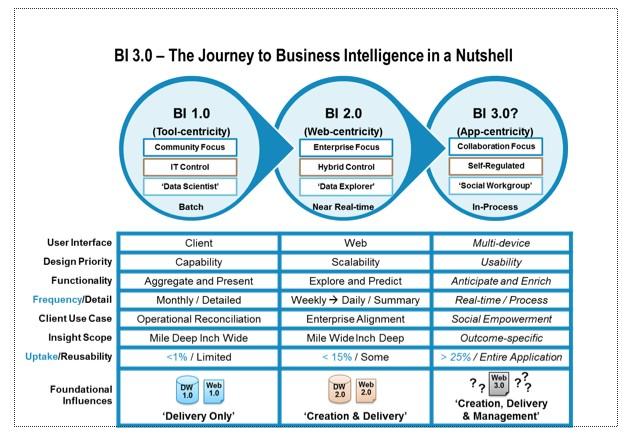Who Decides Who Is at Fault in a Car Accident?
After a car accident, determining who is at fault can be a contentious issue. The answer often hinges on the specific circumstances of the crash. In most cases, the police will investigate the accident and issue a report. This report will include the officer’s opinion on who is at fault. However, the police report is not always binding, and the insurance companies and/or the courts may have their own findings.
How Fault Is Determined in Car Accidents
There are a number of factors that can be used to determine fault in a car accident. These factors include:
- The statements of the drivers involved
- The statements of any witnesses
- The police report
- The damage to the vehicles
- The location of the accident
- The weather conditions
- The traffic laws
In most cases, fault is determined based on a preponderance of the evidence. This means that the party who is found to be more at fault will be held liable for the damages. However, in some cases, both drivers may be found to be at fault. In these cases, the damages will be apportioned between the two drivers based on their respective degrees of fault.
Factors That Can Affect Fault
There are a number of factors that can affect the determination of fault in a car accident. These factors include:
- The driver’s speed
- The driver’s level of intoxication
- The driver’s distraction
- The condition of the vehicle
- The condition of the road
- The weather conditions
In some cases, a driver may be found to be at fault even if they did not cause the accident. For example, a driver who is rear-ended may be found to be at fault if they were driving below the speed limit or if their brake lights were not working.
What Happens If Fault Is Disputed?
If fault is disputed, the insurance companies will typically investigate the accident and make a determination of fault. If the insurance companies cannot agree, the case may go to court. In court, a judge or jury will decide who is at fault.
How to Avoid Car Accidents
There are a number of things that drivers can do to avoid car accidents. These things include:
- Obeying the speed limit
- Avoiding distractions
- Not driving under the influence of alcohol or drugs
- Making sure that their vehicle is in good condition
- Being aware of the road conditions and weather conditions
By following these tips, drivers can help to reduce their risk of being involved in a car accident.
Who Decides Who is at Fault in a Car Accident?
In the aftermath of a car accident, determining fault is crucial for insurance claims, legal consequences, and personal responsibility. While police officers may provide their opinions, the ultimate decision rests with two primary sources: insurance companies and courts.
Police Reports
After an accident, police officers often arrive on the scene to document the details of the crash. Their reports typically include a description of the accident scene, statements from witnesses, and the officer’s preliminary assessment of fault. While these reports can provide valuable information, they are not legally binding determinations of fault. Police officers may have limited knowledge of the circumstances leading up to the accident, and their opinions can sometimes be influenced by factors such as witness bias or personal observations.
However, police reports can still be helpful in establishing a timeline of events and providing an initial framework for determining fault. Insurance companies often review police reports when assessing the liability of drivers involved in an accident. Courts may also consider police reports as evidence, but they are not obligated to accept the officer’s opinion as conclusive.
In some cases, the officer’s report may not be available or may contain insufficient information to determine fault. In such situations, insurance companies and courts will rely on other evidence, such as witness statements, physical damage to the vehicles, and expert testimony.
If you have been involved in an accident, it’s important to contact your insurance company as soon as possible to report the incident and gather all relevant documentation, including the police report. This will help ensure that your rights are protected and that you receive fair compensation for any damages you have incurred.
Who Decides Who Is at Fault in a Car Accident?
When two or more vehicles collide, determining who is at fault is crucial for insurance companies, legal proceedings, and personal liability. The question of fault often sparks heated debates and can have far-reaching consequences. So, who gets to decide who’s to blame?
Insurance Adjusters
Insurance companies play a significant role in assigning fault in car accidents. They employ adjusters, who are trained professionals tasked with investigating accidents, gathering evidence, and determining liability. Adjusters review police reports, witness statements, and physical evidence like skid marks and vehicle damage. They also interview the drivers involved and any other relevant parties. Based on their findings and applicable state laws, adjusters assign fault to one or more drivers.
Police Officers
In some cases, police officers may also contribute to determining fault in a car accident. They respond to the scene, gather initial information, and write a police report that documents the details of the collision. The officer’s observations and conclusions can provide valuable evidence for insurance adjusters and other parties involved in the accident.
The Courts
If the insurance companies cannot agree on who is at fault or if a dispute arises, the matter may be taken to court. A judge or jury will hear evidence from both sides and make a final determination of liability based on the applicable law and the preponderance of evidence. The court’s ruling is binding on all parties involved.
Comparative Negligence
In many states, the concept of comparative negligence is applied in car accident cases. This means that each driver’s negligence is assessed, and the degree of fault is determined. If both drivers are found to be at fault, their financial liability may be reduced in proportion to their respective negligence. Comparative negligence laws aim to ensure fair apportioning of fault and compensation.
Seeking Legal Counsel
If you have been involved in a car accident and are facing questions about fault, it is advisable to seek legal counsel. An attorney can guide you through the process, protect your rights, and help you obtain fair compensation. They can also represent you in court proceedings if necessary.
Who Decides Who is at Fault in a Car Accident?
In the aftermath of a car accident, the question of fault is paramount. Determining who is responsible for the collision is not always straightforward, especially when both drivers have conflicting accounts of what happened. The process of determining fault involves careful analysis of evidence and adherence to legal principles, often resulting in the involvement of law enforcement, insurance companies, and even courts.
In many cases, insurance adjusters play a pivotal role in determining fault. They investigate the accident, gather evidence, and evaluate the accounts of the drivers involved. When adjusters agree on which driver is at fault, they typically make a settlement offer to the affected party. However, if the adjusters cannot reach a consensus, the case may require arbitration or even a trial.
Arbitration
Arbitration is a form of alternative dispute resolution in which an impartial third party, known as an arbitrator, is appointed to hear evidence and render a decision. This process is typically faster and less expensive than going to court, and the arbitrator’s decision is generally binding on the parties involved. Arbitration is often used when insurance adjusters cannot agree on fault or when the parties involved wish to avoid the time and expense of litigation.
Trial
If arbitration fails to resolve the dispute, a trial is the next step. In a civil trial, the plaintiff, the person who has suffered damages, presents evidence to demonstrate the negligence of the defendant, the other driver involved in the accident. The defendant, in turn, has the opportunity to defend against the allegations and present evidence to show that they were not at fault. The judge or jury will then weigh the evidence and make a determination on fault.
Factors Involved in Determining Fault
The question of fault in a car accident is often complex and depends on a variety of factors. Some of the most common factors considered include the following:
- Traffic laws and regulations
- Eyewitness accounts
- Police reports
- The driver’s actions and behavior leading up to the accident
- The condition of the road and weather conditions
- Driver behavior: This encompasses everything from speeding and reckless driving to distracted driving and driving under the influence.
- Traffic laws: Violating traffic laws, such as running red lights or stop signs, can significantly contribute to fault.
- Road conditions: Adverse weather conditions, poor visibility, or road hazards can create dangerous driving situations and influence fault determination.
- Vehicle defects: If a mechanical failure or manufacturing defect causes an accident, it can shift liability away from the driver and towards the manufacturer.
- Witness statements: Testimony from eyewitnesses can provide valuable insights into the events leading up to the crash and help determine fault.
- Police reports: Police officers who respond to accidents typically prepare detailed reports that document the scene, gather witness statements, and provide an initial assessment of fault.
li>Physical evidence, such as skid marks and vehicle damage
Who Decides Who Is At Fault in a Car Accident?
Determining fault in a car accident is crucial for assigning liability and determining who is responsible for damages. While police reports often provide initial assessments, the ultimate decision of fault may lie with insurance companies, civil courts, or administrative agencies.
Police Reports
Police officers typically respond to accidents and gather information from drivers, witnesses, and available evidence. They issue a police report that documents the incident, including their observations and preliminary conclusions about fault. However, police reports are not legally binding and can be contested by insurance companies or in court.
Insurance Companies
Insurance companies play a significant role in determining fault in car accidents. They investigate claims, review evidence, and make decisions based on their own policies and state laws. Insurance companies may assign fault to one or both drivers based on factors such as negligence, comparative negligence, and contributory negligence.
Civil Lawsuits
In serious accidents, victims may file lawsuits to seek compensation for damages, with fault being a central issue. A civil court will hear evidence, consider witness testimony, and determine fault based on the applicable legal principles. The burden of proof typically lies with the plaintiff, who must demonstrate that the defendant was negligent and caused the accident.
Administrative Agencies
In some cases, administrative agencies may also have a role in determining fault in car accidents. For example, the Department of Motor Vehicles (DMV) may conduct its own investigation and suspend or revoke driver’s licenses based on fault. However, these administrative findings do not necessarily preclude civil lawsuits or insurance claims.
Comparative Negligence
Many states follow the principle of comparative negligence, which allows fault to be apportioned among multiple parties. Under comparative negligence, each driver’s percentage of fault is determined, and their compensation or liability is adjusted accordingly. This means that even if one driver is deemed primarily at fault, the other driver may still be partially liable if they contributed to the accident.
Who Decides Who Is at Fault in a Car Accident?
In the aftermath of a car accident, determining fault is crucial for insurance claims, legal liability, and financial compensation. So, who gets to decide who’s to blame? The answer is not always clear-cut and depends on a complex interplay of factors.
Factors Considered
When it comes to assigning fault in a car accident, several key factors come into play. These include:
Insurance Companies and Fault Determination
Insurance companies play a significant role in determining fault after a car accident. They thoroughly investigate the incident, review evidence, and interview witnesses to assign fault and determine liability. If they cannot reach a consensus, they may consult with independent adjusters or seek legal advice.
Legal Considerations
In cases where fault is disputed or the insurance companies cannot agree, the matter may be taken to court. A judge or jury will then weigh the evidence, consider the factors discussed above, and make a final determination of fault. Legal proceedings can be complex and time-consuming, but they can provide a definitive resolution to the issue.
Conclusion
Determining fault in a car accident is a multifaceted process that involves careful consideration of multiple factors. While insurance companies and the legal system play key roles in assigning blame, it’s important to understand the factors that influence these decisions and the potential consequences they can have.
Who Decides Who is at Fault in a Car Accident?
When two or more vehicles collide, the question of who is at fault is paramount. The answer can determine who is liable for damages, injuries, and other costs. While the process of assigning fault can be complex, there are several key factors that play a role.
Police Reports
In most cases, the first step in determining fault is the police report. The responding officer will investigate the accident scene, interview witnesses, and gather evidence. The officer’s report will typically include an assessment of fault, which can be a valuable starting point for insurance companies and attorneys.
Insurance Investigations
Once the police report is complete, the insurance companies involved will conduct their own investigations. They will review the police report, interview the drivers and witnesses, and inspect the vehicles. The goal of these investigations is to determine the extent of each party’s fault and to assign liability accordingly.
Witness Statements
Witness statements can be crucial in determining fault in a car accident. Witnesses can provide firsthand accounts of what they saw and heard, which can help to corroborate or contradict the drivers’ stories. Insurance companies and attorneys will often interview witnesses to gather their perspectives on the accident.
Comparative Negligence
Some states use comparative negligence laws, where fault is apportioned among multiple parties involved in an accident. Under comparative negligence, each party’s fault is assessed as a percentage, and the party who is found to be more at fault is responsible for a greater share of the damages.
Contributory Negligence
Other states follow contributory negligence laws, which hold that if a party is found to be even 1% at fault for an accident, they cannot recover any damages. This can lead to harsh outcomes for parties who are only slightly at fault.
Shared Fault
In many cases, both drivers share some degree of fault for a car accident. For example, one driver may have been speeding, while the other driver may have failed to yield. In these cases, the courts will typically assign fault to both parties and apportion damages accordingly.
How Fault is Determined
Ultimately, the determination of fault in a car accident is a complex process that often requires extensive investigation and legal analysis. By understanding the factors that are considered in determining fault, you can better protect your rights and ensure that you are fairly compensated for your injuries and damages.
Who Decides Who is at Fault in a Car Accident?
Figuring out who’s to blame after a car crash can be a real headache. It’s like trying to untangle a knot of spaghetti – there are so many factors to consider. But don’t worry, we’re here to break it down for you.
Insurance Companies
In most cases, insurance companies are the ones who decide who’s at fault. They’ll look at the evidence, like police reports, witness statements, and photos, to determine who caused the accident. If they can’t agree, they may hire an independent adjuster to take a closer look.
Courts
If the insurance companies can’t reach an agreement, the case may go to court. A judge or jury will then decide who’s at fault based on the evidence presented.
No-Fault Laws
A few states, like Michigan and Florida, have no-fault laws. This means that drivers’ own insurance companies cover their damages regardless of fault. So, if you’re in a car accident in one of these states, you won’t have to worry about getting stuck with the bill if the other driver is at fault.
Comparative Negligence
Some states, like California and Texas, have comparative negligence laws. This means that both drivers can be found partially at fault for an accident. The amount of fault each driver is assigned will determine how much compensation they receive from the other driver’s insurance company.
Contributory Negligence
A few states, like Alabama and Maryland, have contributory negligence laws. This means that if you’re found to be even 1% at fault for an accident, you can’t recover any compensation from the other driver.
What if I’m Not Sure Who’s at Fault?
If you’re not sure who’s at fault for an accident, it’s always a good idea to contact a lawyer. They can help you gather evidence, negotiate with the insurance companies, and represent you in court if necessary.
What Happens if I’m Found at Fault?
If you’re found at fault for an accident, your insurance rates may go up. You may also have to pay for the other driver’s damages, medical expenses, and lost wages.
What Happens if I’m Not at Fault?
If you’re not at fault for an accident, you’re entitled to compensation from the other driver’s insurance company. This can include damages for your car, medical expenses, lost wages, and pain and suffering.
How Long Does it Take to Determine Fault?
The amount of time it takes to determine fault in a car accident can vary depending on the circumstances. If the evidence is clear, the insurance companies may be able to reach an agreement within a few weeks. However, if the evidence is disputed, it may take months or even years to resolve the case.




Leave a Reply